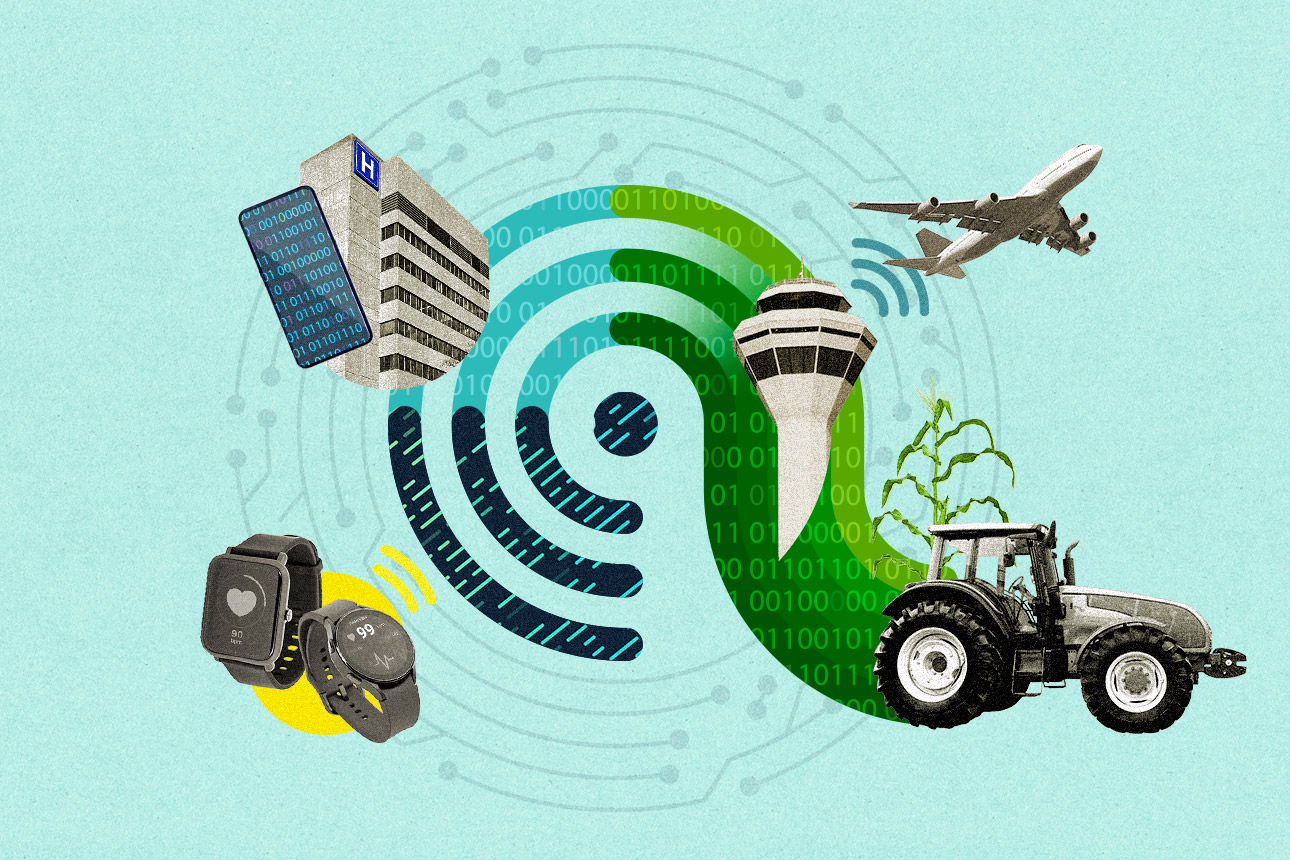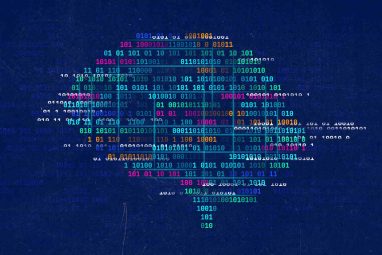How AI Changes Partner Collaboration
Explore six steps for using AI with external partners in new ways to drive product and business model innovations.
Topics
News
- CERN and Pure Storage Partner to Power Data Innovation in High-Energy Physics
- CyberArk Launches New Machine Identity Security Platform to Protect Cloud Workloads
- Why Cloud Security Is Breaking — And How Leaders Can Fix It
- IBM z17 Mainframe to Power AI Adoption at Scale
- Global GenAI Spending to Hit $644 Billion by 2025, Gartner Projects
- e& enterprise Partners with MIT Sloan Management Review Middle East for GovTech Conclave 2025

Carolyn Geason-Beissel/MIT SMR | Getty Images
In a time of constant change and evolving customer expectations, the ability to innovate quickly is no longer an option but a strategic necessity. Innovation is driven by creativity — the ability to envision solutions that are novel and useful — and many companies are finding that they come up with breakthrough ideas more effectively and rapidly by working with partners outside of their own organizations.
We are seeing a degree of partnering among organizations, including competitors, as never before. And we are seeing artificial intelligence unlock unprecedented levels of creativity, not just in what these partnerships produce but in how these businesses collaborate.
Our research — including our books Artificial Intelligence for Business Creativity (edited by Pagani with Renaud Champion) and All-In on AI (written by Davenport and Nitin Mittal) — examines how companies are using AI, both generative and analytical, as a catalyst for new ways to work together. These companies are going beyond using AI in ways we might now think of as typical, such as gaining deeper insights from data analysis, automating routine tasks, and accurately forecasting trends. Drawing on an analysis of over a thousand AI systems in practical application, as well as in-depth discussions with industry leaders, below we highlight AI’s pivotal role in fostering novel collaborations and driving organizational transformation.
Types of AI-Driven Partnerships
AI-driven alliances come in many flavors. They can be classified based on the number of partners involved or by the nature of the relationship.
Bilateral organizational collaborations involve two partners. These partnerships leverage complementary strengths, even when integration complexities are a challenge. AI-driven ecosystems involve three or more partners working to create a network of AI-driven solutions. The key benefits of these partnerships are shared knowledge and resources; the challenges are coordinating multiple stakeholders and data integration.
Collaborations can also be categorized based on the nature of the relationship. Service-oriented vendor relationships aim to enhance productivity and accelerate AI-powered innovations at scale. Research consortia create hubs of AI research and education that support national AI goals. They often address the challenges of aligning research and commercial interests through government-industry-university partnerships. Data-centric networks focus on sharing data across organizations and analyzing it with AI, specifically to address the increasing data demands of AI-driven enterprises.
While most of these partnerships have commercial objectives, they can also foster innovation by bringing together diverse perspectives and skills. These collaborations can lead to creative solutions that push the boundaries of what’s possible with AI.
The Role of AI in Collaborations
AI-centered partnerships facilitate unprecedented levels of data sharing and the potential for novel business models that redefine industry boundaries. But what is the specific role of AI in making these advances possible? Let’s dive deeper into how generative AI and traditional analytical AI using structured data have specifically contributed to the success of collaborations.
First, we see AI being used as an enabler of ecosystem data integration. Multi-organization ecosystems often involve sharing data in different formats with different information. AI can assist in merging these disparate types of data using probabilistic machine learning approaches from analytical AI. For example, the European aircraft manufacturing company Airbus has created an ecosystem called Skywise that comprises all of the global airlines that fly its airplanes. The airlines share their operational data to improve performance, and Airbus employs AI tools from software company Palantir Technologies to integrate these disparate data sets.
Second, we see organizations adding AI capabilities to existing or emerging AI platforms to essentially supercharge them. The newest trend in AI is agentic AI, where AI programs work together to complete tasks rather than just make content. We believe that these collaborative AI programs will create a network of useful tools. For example, Microsoft Research and several universities have created AutoGen, an open-source project to build these AI programs and their frameworks. Imagine a team of virtual assistants in which one can schedule meetings, another can write emails, and another can analyze data. AutoGen helps these AI assistants work together.
Third, AI is being used to enhance products and services across collaborations and ecosystems. We see AI tools in use throughout the medical industry in particular. In Singapore, Changi General Hospital is collaborating with Respiree, a medical technology spinoff of Singapore’s Agency for Science, Technology, and Research, to develop a remote patient monitoring system that includes AI algorithms to predict patient deterioration. This system employs wearable sensors to track patient vital signs and provide early warnings of abnormal variations, allowing for timely interventions and better patient care. Another health-related collaboration is one between Nvidia and Johnson & Johnson MedTech, which are developing AI-powered devices for surgical decision-making, including a real-time tumor identification tool.
And fourth, AI is being used to guide prosocial objectives and behaviors. The Partnership on AI, for example, is a large group of profit-oriented companies and not-for-profit organizations focused on “creating solutions so that AI advances positive outcomes for people and society.” One of its projects delves into AI-driven content recommender systems, specifically through its AI and Media Integrity Program and its Content Targeting and Ranking Workstream. The goal is to better support prosocial behaviors and a healthier information experience. This type of collaborative AI association generally does not create AI systems but rather identifies the attributes of AI systems for others to develop.
A Strategic Blueprint for AI-Driven Collaborations: Six Steps
Drawing from our analysis, we propose six steps for organizations looking to use AI for collaboration and innovation. This blueprint involves strategic, technical, organizational, and ethical activities.
1. Decide how — and what — AI will transform. The first key step is to decide how a company and its potential partners can use AI in their collaboration. Senior executives should strategize about what business units, strategic elements, and key processes are ripe for transformation. They should think big: A perspective on AI that is primarily focused on incremental change in processes or somewhat improved decision-making severely overlooks the technology’s potential.
Ping An, initially a property and casualty insurance company, invested in several health technology companies through its venture arm before it realized that there were opportunities in China for sharing health data. It formed a “health cloud” in 2014 — an ecosystem for delivering intelligent, AI-driven medicine services — which led to the creation of the Good Doctor app. The services it provides range from online consultations and hospital referrals to health management, and it employs analytical AI to diagnose medical problems and recommend treatment approaches. The ecosystem now has about 450 million registered users and connects over 50,000 doctors, more than 3,000 hospitals, over 200,000 pharmacies, and more than 100,000 health care service providers. In our view, it has transformed health care delivery in China and Southeast Asia. This transformation is further validated by the certifications it recently received from the World Organization of Family Doctors, a global family medicine association.
2. Build a set of diverse partnerships. Collaborating with a variety of partners can drive creativity and innovation, and companies should start by identifying potential partners, sharing data, and exploring joint initiatives. Airbus’s Skywise ecosystem is a prime example of how diverse partnerships can lead to innovative solutions. The information the airlines share ranges from data to be used for better predictive and preventive maintenance to dealing with unexpected events. Another example is the Vector Institute for Artificial Intelligence in Toronto, which is supported by the Canadian government and many Canada-based companies to provide research and help startup companies build their businesses.
There are, of course, often concerns about collaborating with a competitor. Companies building these partnerships need to work toward providing capabilities that their partners cannot provide on their own. For example, when Sompo Holdings became the Japanese joint venture partner with Denver-based Palantir, it became the only nursing home company in Japan with the ability to integrate and analyze data across the broader nursing home ecosystem.
3. Develop value-added services. Once partnerships have been formed and data has been shared and integrated, companies need to build value-adding AI services to analyze the data and provide benefits to ecosystem members. At Airbus, the AI team developed use cases for Skywise members that involved not just airplane predictive maintenance but equipment problem diagnosis and route optimization as well. In another example, IBM and Thomson Reuters teamed up to create an AI-powered regulatory technology solution to help banks simplify regulatory compliance. This framework was designed to use AI to provide real-time financial services data from thousands of content sources, enabling banks to keep pace with regulatory changes and manage risk more effectively.
4. Address societal and environmental challenges. Organizations should use AI collaborations to tackle broader societal and environmental issues while fostering economic growth. Hectar, a French organization focused on teaching regenerative agriculture practices, has partnered with HEC Paris to establish an acceleration and education program for current and future farmers. Entrepreneurs are able to pilot their new technologies — including some utilizing AI and robots — onsite at the school’s farm.
5. Prioritize ethics and transparency. AI collaborations hold immense potential, but they also present significant challenges and ethical dilemmas that must be addressed. The sharing of sensitive data among partners can raise data privacy and security concerns. It is imperative for organizations to implement robust data protection measures and safeguard sensitive information if they’re to maintain trust among stakeholders.
The U.S. federal government is helping to force companies’ hands: In 2023, it released long-in-the-works regulations for health care data-sharing and new standards for transparency in the data used for health care AI applications. In the private sector, Unilever has partnered with Holistic AI, a U.S. company that helps organizations with AI governance, to evaluate each of its AI use cases for “AI assurance” — focusing on both ethical compliance and overall effectiveness.
6. Embrace flexibility and learning. Given the evolving nature of AI and collaborative initiatives, companies need to remain adaptable and learn from early efforts. Here again, companies can learn from partners as they expand product and service offerings in ways that they could not have easily achieved on their own. Salesforce, for instance, has partnered with IBM, Nvidia, Slalom, and Google for a variety of AI products. Although some of these vendor partnerships are transactional, the Salesforce-IBM partnership has encompassed more than one generation of AI technology.
By proactively embracing AI while upholding ethical principles, businesses can unlock unprecedented opportunities for growth through collaborative partnerships. AI serves as a catalyst for organizational change and innovation, extending beyond the walls of an organization to transform entire industries and address broader societal and environmental issues.





